Does Speed Work Work? My Response to Mike Tuchscherer’s Article [Part 1]
Introduction
Mike Tuchscherer’s article Why Speed Work Doesn’t Work lifted a lot of dust. I have read Bret Contreras’, JL Holdsworth’s and Chad Smith’s responses and I have wrote some of mine ‘comment’ on Jim Wendler’s Facebook Wall.
Today Mike contacted me and invited me to expand further and continue the discussion on his forum since he found my comment interesting. Thus I decided to write one blog entry as a starting point, along with explaining my rationale/viewpoint.
I have huge respect towards Mike, what he is doing, both as a lifter and as a coach. I have learned a ton from him and he was really helpful with his responses to my emails and questions.
Before I type anything I need to make couple of things straight. First of all I am not powerlifter nor I coach powerlifters. I do not coach strength athletes either, nor bodybuilders. I work with team sports athletes that demand a mixture of physical qualities ranging from power, speed, endurance, strength, but most importantly technical and tactical skill. I have some data on my own lifts by using Gym Aware LPT system which I will present shortly, but since I am weak as kitten (compared to elite powerlifters) take them with grain of salt (in more scientific term it is hard to make any inferences to elite powerlifting population from my own lifting samples). I will mainly reference some studies and use rational thought (that needs to be confirmed with scientific/empirical method).
Load-velocity Profile
Load-velocity profile [trade-off] is one of the most fundamental concepts in kinesiology, emerging in characteristics of single muscle fibers, single joints and finally of multi-joint complex movements. I am not sure we completely understand why it happens and what is the exact mechanism – even at the level of basic muscle fiber – and not even at the level of complex movements governed by even more complex nervous system.
Anyway, load-velocity trade-off is there even if we don’t understand it completely. To make things simpler I will refer to common strength training movements like bench press and squat when I discuss load-velocity trade-off. I have written couple of articles regarding velocity-based strength training and using load-velocity profile of the lifter for estimating his 1RM and prescribing training HERE (make sure to follow links in the text).
One can look at load-velocity profile as a formula, where velocity of a movement [V] is predetermined by external load [L].
V (L) = a x L + b
Constants a represent slope and constant b represent the intercept. In short: velocity of a movement depends on the external load. Here is my load-velocity profile for the squat (pause around 1sec at the hole).

Load-Velocity profile for squat
As you can see correlation is nearly perfect between the two. I took 160kg as my 1RM and associated speed was 0.3 m/s (mean concentric velocity). If I use regression formula (one could use =TREND function in Excel, or manually by using slope and intercept), velocity at 160kg is estimate to 0.301 which is practically exact (as can be seen by low SEE). Thus one could use this regression to estimate 1RM.
Note that 1RM doesn’t always happen at 0.3 m/s. My bench press is somewhere around 0.15 m/s and this might depend on the level of the lifter (beginner, intermediate, advance), movement (small vs. large muscle mass involved), type of lifter (ST or FT, grinder or explosive), etc. So it is individual.
Goal Of Powerlifting
What is the goal of powerlifting? The goal is to lift as much weight as possible without time reference. So one could lift 200kg in 4 sec and another might grind it for 20sec. Same results – so the movement velocity of 1RM doesn’t matter in powerlifting.
Looking at the curve above the goal is to move 1RM to the right (i.e. from 160kg to 180kg). What happens with the slope of the curve doesn’t really matter – powerlifters are not competing who can generate more velocity with submax weights. This can’t be said for other sports!
Sometimes even if the 1RM doesn’t improve, if the velocity (and thus power output) at certain submax load (usually representing external resistance common to sport competitions [and NOT working around some magical load that produces peak power output]) improves that represent positive improvement. This is of no importance in powerlifting though.
Here is the possible scenario of me improving velocity without improving my 1RM which is still important in more [real] power dominant sports.

Improvements in Velocity at without improvement in 1RM
And here is the possible opposite scenario of me improving my 1RM without much improvement velocities at submax load.
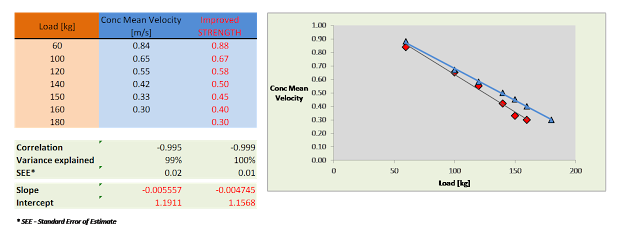
Improvements in 1RM without improvements in low resistance velocities
Third possible solution might be shifting the whole graph to the right by improving both 1RM and submax velocities.

Improvements in both submax load velocities and 1RM
From a powerlifting standpoint the only important thing is improving your 1RM. Speaking of this I can improve my powerlifting result by not even affecting the load-velocity curve. You wonder how? By simply learning to grind more weight and in becoming more confident in it. Check the graph – I am learning to grind and I am able to lift 180 kg at lower speed.
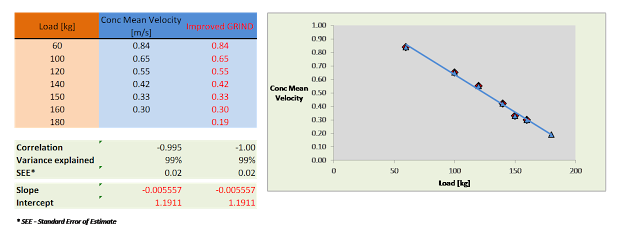
Improving grinding?
I am not sure if this is an improvement (development) or rather learning to express what one already have – and this goes pretty much in line with my develop~express concept. More experienced powerlifters and/or scientist might chine in on this topic. Also – can you change your grinding speed? Please chime in in the comments or on Mike’s forum.
Going back to situation where the load-velocity curve improved so that 1RM improved, while velocity at submax weight didn’t (I am re-posting it again)

As you can see from the graph, as I have improved my 1RM I have also improved lifting velocities in the zone around 1RM. I am not sure if this is circular causation so the opposite is also true (i.e. improving velocities in the circa-maximal zone will improve 1RM). And I believe this is the CORE ISSUE here so I will bold it:
If improving 1RM also improves submax velocities, will improving submax velocities also improve 1RM? And who is first – chicken or the egg and what is the best way to improve each?
Since this is the chicken or the egg problem (as long as I don’t see experimental study with groups) automatically assuming process by the outcomes might be misleading. What do I mean by this? We have a tendency to believe/assume that using loads/velocities associated with one part of the curve will improve that same part of the curve. We can see this same rational flaw in distance running – and I HIGHLY suggest checking this great article by Steve Magness on Physiologial Model of Training (Note to Steve: if you are reading this I am still awaiting for the part two) and Attacking Adaptation from Multiple Directions.
In plain English – will using circa maximal loads (90+%) improve 1RM better than submax weights over time? Will peak power be mostly improved by utilizing loads associated with it? Will VO2max be mostly improved by using VO2max workouts? Will lactate threshold be mostly improved by utilizing lactate threshold workouts? Is the best way to improve soccer skill by playing 10v10 all the time? And many more examples of develop~express confusion, misunderstanding of the specificity principle and training transfer along with highly mechanical/linear thinking.
I have written about this during 2009 in my Planning the Strength Training article, but I was mainly referring to the repetition continuum that you can see in most strength and conditioning textbooks:
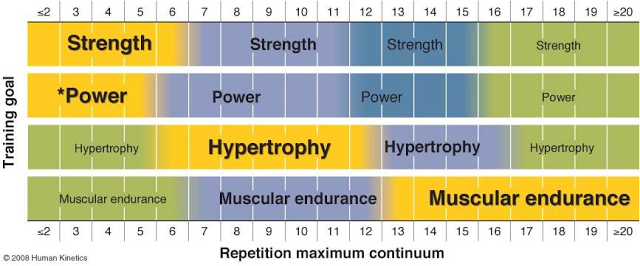
Repetition Continuum
It can be said that reaching of the different strength training goals (and thus motor qualities) is based on utilization of different loading protocols (weight, reps, sets, tempo, rest, etc.) or methods. So, each of the methods aimed at reaching different strength training goal utilize different loading protocols. This is based on the repetition continuum, or the ’idea’ that different goals can be achieved utilizing different reps per set. There is a dynamic interaction between the variables of reps, sets and loads. The load used (% of 1RM) ultimately determines how many reps per set are done. Reps per set (or set time) ultimately determines how many total sets must be done. The interaction between the three will affect what adaptation is seen. Although not all authorities agree, there is thought to be a continuum of adaptations which may occur with different repetition sets. This continuum is called repetition continuum. — From Planning the Strength Training, 2009.
We have tendency to think this way and rationalize training methods, but it might be flawed. It is same as thinking that playing basketball will make you taller because basketball players are tall. Yes this is a bit extreme, but it is same flawed reasoning.
Maybe I am nitpicking, but this might be reason of our frustration to understand same results with totally different programs and appreciate that what brought someone from A to B, might not bring him from B to C.
Here is an example in running – the HIIT is quite popular and research is showing that runners who start doing more HIIT improve their performance and aerobic capacities more (there is the difference between improving VO2max and performance, see article by Steve Magness). And yet we see that most elite runners do mainly great volume of low intensity work and the ones who improved more did that by increasing low intensity volume instead of high intensity volume (see article by Seiler).
When it comes to training we believe that the best way to improve 1RM (or strength) is to do loads very close to 1RM. And yet we have extremely strong lifters using Sheiko routines that are mostly 75-80%. It might be also interesting to read interview with Carlo Buzzichelli by Bret Contreras regarding this issue.
Enough for today – I have covered some basic theoretical/philosophical and maybe even practical aspects of this issue. I will leave you with the resources linked for now and continue soon with more practical words.
Stay tuned till part two…

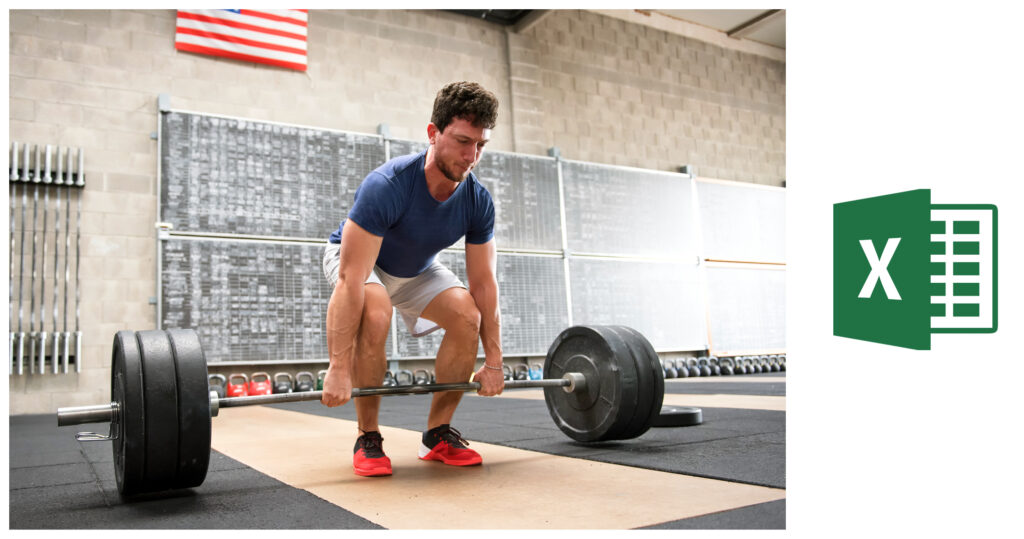

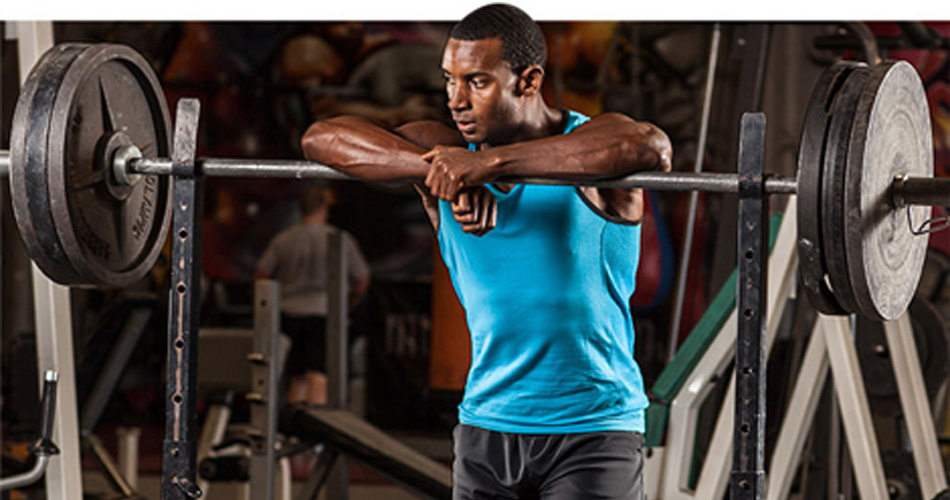
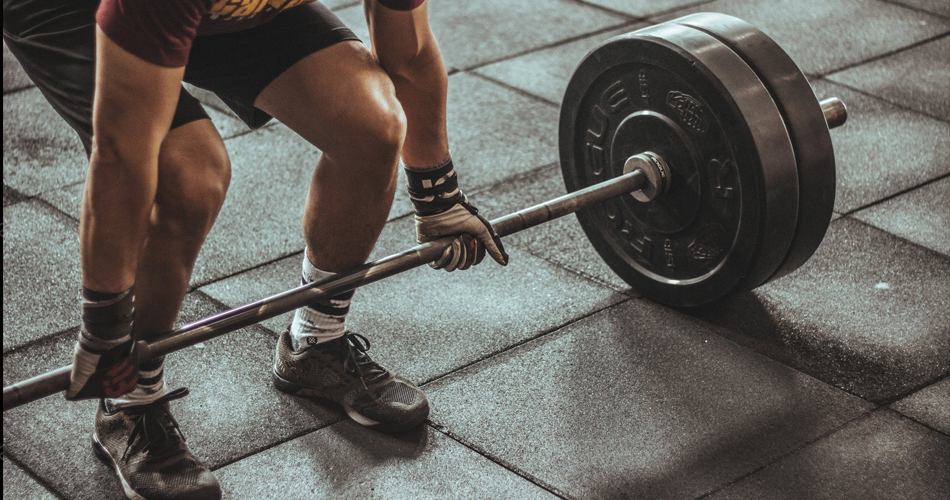






Responses